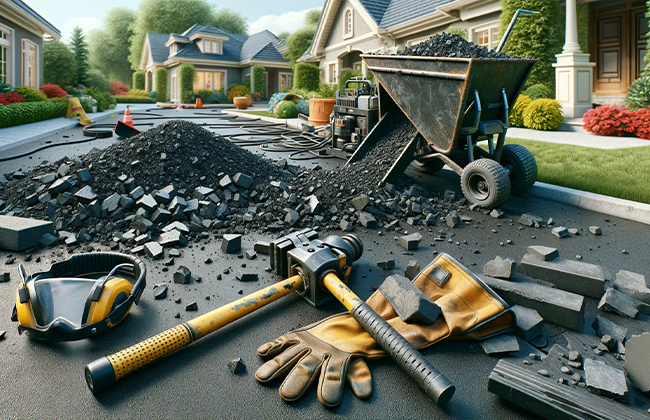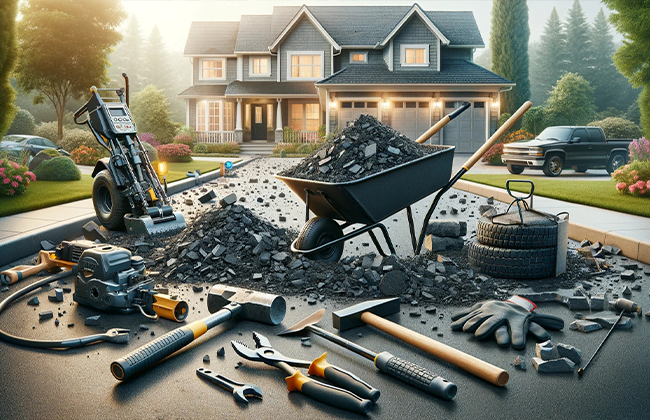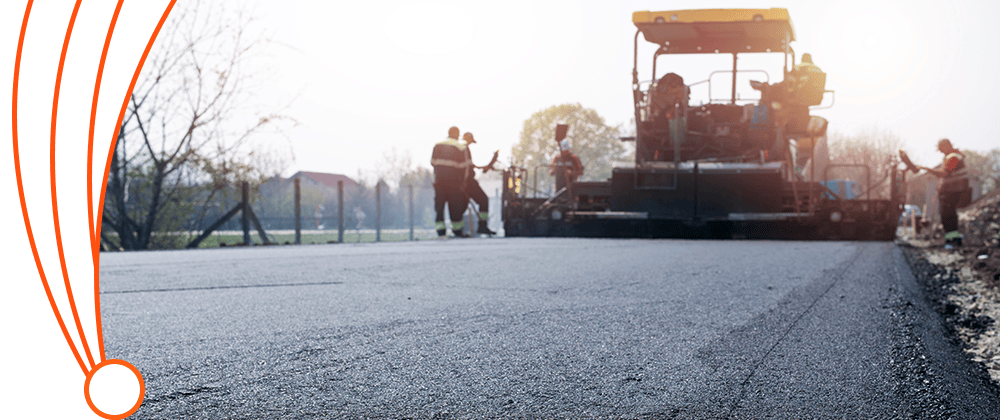Understanding how to remove a blacktop driveway is essential for homeowners looking to renovate or replace their existing driveway. Blacktop driveways, known for their durability and cost-effectiveness, are a common feature in residential areas. However, over time, they may require removal due to damage or for an upgrade. This comprehensive guide aims to provide you with detailed steps and tips to effectively and safely remove a blacktop driveway, ensuring you’re well-prepared for this significant home improvement task.
Table of Contents
Understanding Blacktop Driveways: What is Blacktop?
Blacktop, commonly known as asphalt, is a prevalent material used in constructing driveways, roads, and parking lots. It consists of a mixture of aggregates – such as sand, gravel, and stones – bound together with bitumen, a sticky, black, and highly viscous liquid or semi-solid form of petroleum. The robust composition of blacktop makes it durable, weather-resistant, and able to withstand heavy loads, which explains its widespread use in driveway construction.
Understanding the properties of blacktop is crucial when planning its removal. Its durability comes from the bitumen that binds the aggregates together, forming a flexible and water-resistant surface. However, over time, exposure to weather elements and constant use can cause wear and tear, leading to cracks and deterioration. When these issues become significant, removing and replacing the blacktop becomes necessary.
Steps on How to Prepare for Blacktop Driveway Removal
Assessing the Job
Before you begin the process of how to remove a blacktop driveway, it’s essential to assess the task ahead. Start by evaluating the driveway’s size and thickness. This will help you determine the amount of time, effort, and resources needed for the project. Also, consider any obstacles, such as adjacent landscaping or structures, that may affect the removal process.
Required Tools and Safety Gear
For the removal of a blacktop driveway, you will need specific tools and equipment. Key tools include:
- Jackhammer: This is crucial for breaking up the hard surface of the blacktop.
- Shovel: A sturdy shovel will be necessary for removing broken pieces of asphalt.
- Wheelbarrow or Dumpster: To transport and dispose of the asphalt pieces.
- Safety Gear: This includes heavy-duty gloves, safety goggles, and protective footwear to prevent injury during the removal process.
Detailed Process of Removing a Blacktop Driveway
Step 1: Breaking the Surface
Begin by using a jackhammer to break the blacktop into manageable pieces. This step requires patience, as you’ll need to methodically move across the driveway, ensuring that the surface is evenly broken up. The process can be physically demanding, so take regular breaks to avoid fatigue.
Step 2: Removing the Pieces
Once the blacktop is broken into smaller pieces, use a shovel to lift and transfer these pieces into a wheelbarrow or dumpster. Depending on the driveway’s size, this step can be quite labor-intensive. It’s advisable to approach this task methodically, working in sections to make the process more manageable.
Step 3: Cleaning the Base
After all the blacktop pieces are removed, focus on cleaning the base layer. This is an essential step, especially if you plan to install a new driveway. Remove any debris, dust, or small asphalt pieces to ensure a clean and even surface.
Disposal of Blacktop Material: Recycling Options

Asphalt is a recyclable material, which is an important consideration in its disposal. Contact local recycling centers to inquire about disposing of asphalt. Many facilities specialize in recycling asphalt into new construction materials, contributing to environmental sustainability.
Preparing for a New Driveway: Laying the Foundation
If you’re planning to install a new driveway, preparing the base is critical. The process involves:
- Leveling the Soil: Ensure the ground is level and even.
- Compacting the Soil: Use a compactor to solidify the base, preventing future settling or shifting.
Maintenance and Care: Post-Removal Tips
Once the blacktop driveway is removed, and before a new surface is laid, maintain the area by:
- Regular Cleaning: Keep the area free of debris and dust.
- Leveling the Surface: Regularly check and level the surface, especially after heavy rains or if you notice any settling.
Conclusion
Concluding, knowing how to remove a blacktop driveway is a valuable skill for any homeowner. Whether you’re planning a complete driveway overhaul or preparing for a new installation, the process requires careful planning, effort, and attention to detail. By following the steps outlined in this guide, you can successfully remove your old blacktop driveway and pave the way for a fresh, new surface. Remember to prioritize safety, utilize proper tools, and consider environmentally responsible disposal methods to ensure a smooth and effective driveway removal process.
FAQs
Q1: How long does it take to remove a blacktop driveway?
A: Removing a blacktop driveway varies in time depending on its size and thickness. Typically, for an average-sized driveway, it can take a few days of physical work. Planning and having the right tools can streamline the process.
Q2: Can I remove a blacktop driveway by myself?
A: Yes, it’s possible to remove a blacktop driveway yourself. However, it requires the right tools, safety equipment, and a basic understanding of the process. For larger or more complex driveways, seeking professional help might be more efficient.
Q3: What are the key tools needed for blacktop driveway removal?
A: Key tools for removing a blacktop driveway include a jackhammer for breaking up the asphalt, shovels for removal, a wheelbarrow or dumpster for debris, and essential safety gear like gloves and goggles.
Q4: Is it necessary to clean the base after removing the blacktop driveway?
A: Yes, cleaning the base after removing the blacktop is crucial, especially if you plan to install a new driveway. It ensures a level and clean foundation, which is vital for the longevity of the new surface.
Q5: How should I dispose of the removed blacktop material?
A: You can often recycle disposed blacktop material. Check with local recycling centers for asphalt recycling options. This environmentally friendly approach helps reduce waste and contributes to sustainable practices.




